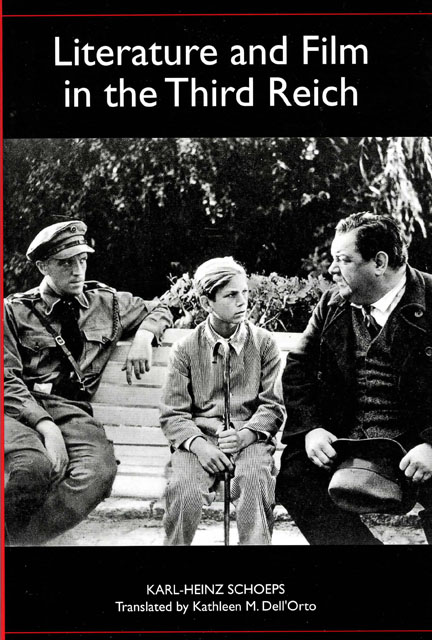Book contents
- Frontmatter
- Contents
- List of Illustrations
- Introduction
- 1 Historical Overview
- 2 The Ideological Context
- 3 Literature and Cultural Policies in the Third Reich
- 4 The National Socialist Novel
- 5 The National Socialist Drama
- 6 National Socialist Poetry
- 7 Film in the Third Reich
- 8 Non-National Socialist and Anti-National Socialist Literature
- 9 Closing Comments
- Biographical and Bibliographical List of Authors
- Selected Bibliography
- Translator’s Note
- Index
1 - Historical Overview
Published online by Cambridge University Press: 01 March 2023
- Frontmatter
- Contents
- List of Illustrations
- Introduction
- 1 Historical Overview
- 2 The Ideological Context
- 3 Literature and Cultural Policies in the Third Reich
- 4 The National Socialist Novel
- 5 The National Socialist Drama
- 6 National Socialist Poetry
- 7 Film in the Third Reich
- 8 Non-National Socialist and Anti-National Socialist Literature
- 9 Closing Comments
- Biographical and Bibliographical List of Authors
- Selected Bibliography
- Translator’s Note
- Index
Summary
AFTER ADOLF HITLER had decided in 1919 to become a politician and began in 1920 to reorganize the German Workers’ Party (DAP) into the National Socialist German Workers’ Party on the model of a small Austrian right-wing party, it was not at all foreseeable that this party, with him at its head, would seize control of the German Reich a mere thirteen years later, despite Arthur Moeller van den Bruck's conviction that the National Socialist Party, which he had already dreamed of shortly after the turn of the century, would “certainly be part of the German future.” The DAP for which Hitler initially acted as the recruiting spokesman and propaganda speaker was in 1919 nothing but an insignificant right-wing party among numerous ideologically similar groups such as the many bündisch associations or the völkisch, pan-German Thule organization that boasted of Aryan ancestry and operated with runes and swastikas, and whose leader, Rudolf Glauer, called himself Rudolf, Baron of Sebottendorf. This organization also produced later Nazi ideologues like Alfred Rosenberg, Hans Frank, and Hitler's mentor, Dietrich Eckart. The newspaper of the Thule Society, the Münchener Beobachter (Munich Observer), was the precursor of the NSDAP newspaper Völkischer Beobachter (The Völkisch Observer) as well. Combining nationalism and socialism was a clever propaganda maneuver, and as became evident in time, the combination merged the two essential political currents of the nineteenth and early twentieth centuries into one party, at least in name. The NSDAP attempted to benefit politically from a relationship with these two German movements and to guarantee national continuity to the population, in particular to the great majority of conservative voters. The NSDAP attempted to exploit for its own purposes the uneasiness with capitalistic materialism and bolshevist communism that continued to prevail by ostensibly fusing socialism and German nationalism to form one party. In particular, the NSDAP knew how to turn latent and open anti-Semitism to its political advantage. As the drum beater for this movement, Adolf Hitler had finally found a sphere of activity that suited him.
German nationalism had awakened with the wars of liberation in the early nineteenth century as the German state threw off the Napoleonic yoke. In the course of the restoration after the Congress of Vienna, this nationalism still had a progressive, republican focus.
- Type
- Chapter
- Information
- Literature and Film in the Third Reich , pp. 9 - 14Publisher: Boydell & BrewerPrint publication year: 2010



